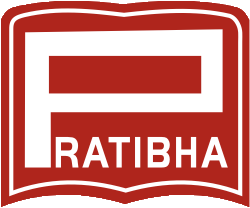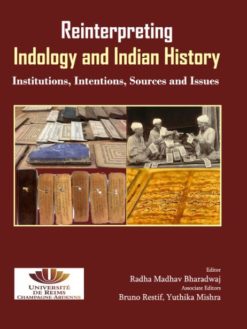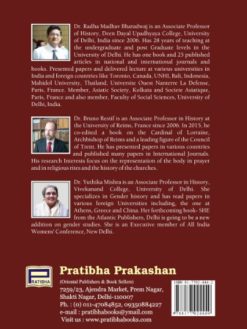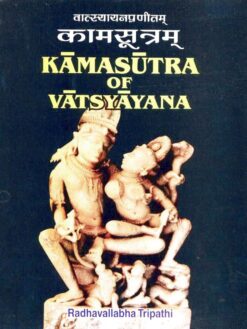There are four human goals called Caturvarga or the four puruşărthas namely dharma, artha, kāma and mokşa propounded by our seers (maharşis) for the proper regulation of human life. All these four (or the first three trivarga) are equally essential for the life of a human being. Kama or the feeling of love is the very source of life on this earth. Kāma is one of the most profound notions of the Sanskrit Culture which India evolved as the life-pattern of her vast people, devoted to an enlightened pursuit of institutionalized achievements along the way of their continued striving for human perfection. Basically Kāma is the activity of the mind to comprehend or possess something on the thought level but generally, Käma is understood in its sex-centered connotation with regard to one’s whole personality as coming in union with another personality of the opposite sex. This very Kāma has been referred to by our sastrakāras as ratibhäva or the erotic sentiment, which is the sthāyibhāva of Srngära rasa. The existence of both the sexes – näyaka and the näyikā is essential for the udbhūti (evolvement) of ratibhāva. When the näyaka and the nayikā are attracted to each other, rati finds its way. There are certain qualities; gunas and alankāras present in the näyaka and the näyikā which form the reason for their attraction towards each other. There are many qualities (alankāras) through which a nãyikā is capable of attracting a nayaka towards herself. Bhiksu Padmasri, the ācārya of erotics, accepts these as the prelude of sambhoga in his treatise Nagarasarvasva. Ācārya Abhinavagupta accepts these as the bhāvakas of samhoga. Abhinavakālidāsa Nrpati Nanjarāja considers these nāyikāgunas as Srigāracesta, Rāmcandra and Gunachandra as yauvanasthadharma and the other dramaturgist and rhetoricians yoşidalankāra or the näyikälankāra. Like the sättvika gunas of nāyakas, the nāyikās do possess sättvika alankāras. It appears that nāyikālaňkāras are sättvika according to Bharata Muni because just after defining and discussing sattva, he has referred to the Nāyikā-Nātyālaňkāras. According to Dhananjaya, these alankäras are as sattaraja: Yauvane sattvajāḥ strīnāmalankārāstu vimsathi Acārya Hemacandra also coined this: Sattva Lh vimsatih strīņā malankārā hf
Although most of the dramaturgist consider these alankāras as sāttvika but Nrpati Nañjarāja accepts these as Srigăraceşță which according to him are eighteen in number:
Evam śrigāracestāh syuraştādasavidhāh smrtäh/
Bhāvo hävaśca helā ca mādhuryam dhairyamityapi//
lilāvilāso vichitra vibhramah kilakiñcitam/
Mottāyitam kuttamitam vibbokam lalitam tathakutūhalam ca capital viratham hāsa ityapi/
In this connection, the view of Bhiksu Padamśri is more appealing who defines these alankāras which are sixteen in number as the prelude of sambhog:
Hela, Vicchitti, Vibboka,. Kilakiñcita, Vibhrama, Līlā, Vilāsa, Háva Viksepa, Vihrta, Mada, Moțtäyita, Kuțtamita, Mugdhatā, Tapana and Lalita.
Acārya Bharata has accepted twenty kinds of these alarkāras classifying them in three categories. According to him, there are three śarīraja alankāras, ten sväblhāvika, and seven ayatnaja as follows:
Hela havasca bhāvasca parasparasamuthitäh/
Shatabdi bhavan tete śarire prakrtisthitäh//
Lilā vilāso vicchittirvibhramah kilakiñcitam
Mottāyitam kuttamitam bibboko lalitantatha
Vilhrtanceti vijñeyā daša strīņām svabhāvajäh/
Sobha kāntiśca diptiśca tathā mādhuryameva ca
Dhairyam prāgalbhyamaudäryamityete syurayatnajäh//
Dhananjaya also accepts the three categories Rāmacandra and Gunacandra, the composers of Nātyadarpana have accepted the twenty alarkāras the classification by Bharata Muni but they consider these alankāras as yauvanastha dharma of nāyikās. Ācārya Hemacandra has also propounded three categories of these twenty näyikålankāras. Ācārya Sāradātanaya
classifies these twenty into two categories. According to him, ten are sättvika and the other ten are śarīraja.
Viśvanātha Mahāpātra has accepted twenty-eight yauvanälankāras of näyikās. Out of these three are angaja, seven ayatnaja, and eighteen svabhava. Thus, our dramaturgists and the ācāryas of Erotics differ in opinion as regards number, nature and name of these näyikālankāras. All of them have accepted three categories of the näyikālankāras namely Sarīraja, svabhāvaja (svābhāvika), and ayatnaja.
Bhāva, Häva, and Helä are śariraja as they are physical graces of women. Lila, Vilāsa Vicchitti, Vibhrama, Kilakiñcita, Moffat, Kuttamita, Bibboka, Lalita, and Virat and Svabhāvaja or the natural graces of women. Sobhā, Kānti, Dipti, Mādhurya, Dhairya, Prāgalbhya, and Audārya are Ayatnaja or the involuntary graces of women. Our Sāstrakāras have made three categories of the näyikālankāras but none of them has clearly indicated the propriety of these three and the difference between svabhavaja and ayatnaja. Apparently, ayatnaja means those alankāras which appear in a nāyaka or näyika without any effort. Svabhāvaja means those alankāras that change according to the svabhāva-nature of a particular nāyaka or nāyikā. Thus, there is a minute difference between these two svabhāvaja and ayatnaja nāyikālankāras. The composers of Nātyadarpaņa have accepted angaja and stabhāvaja alankāras as cesțătmaka and they consider ayatnaja alankāras as consisting of dehadharma without any effort being rendered manifest after the enjoyment of love (sambhoga) with the nāyaka.
Tatah pare sapta yatnam antahparispandam vinā dehadharmarūpāh puruşopabhoge sati bhavanti. Pūrve tu cestātmakāh.
Thus Rämacandra and Gunacandra have tried to differentiate between svabhāvaja and ayatnaja näyikālankāras.
The seven world-famous works of Kavi Shiromani Dipaśikhākālidāsa are full of hundreds of references of Erotics (Erotology – Kāma). There are beautiful pictures of Erotics painted here and there in the Kumārasambhava. The sixteen bhāvas aptly defined as the prelude of sambhoga by Bhikşu Padmaśri and few others have been accepted as twenty (up to twenty-eight) nāyikālankāras out of which seven ayatnaja alankāras as found in Kumārasambhava will now be dealt with in this paper.
This paper was presented at VII World Sanskrit Conference held at University of Vienna, Vienna, Austria in August-September, 1990, by Sushma Kulashreshtha




